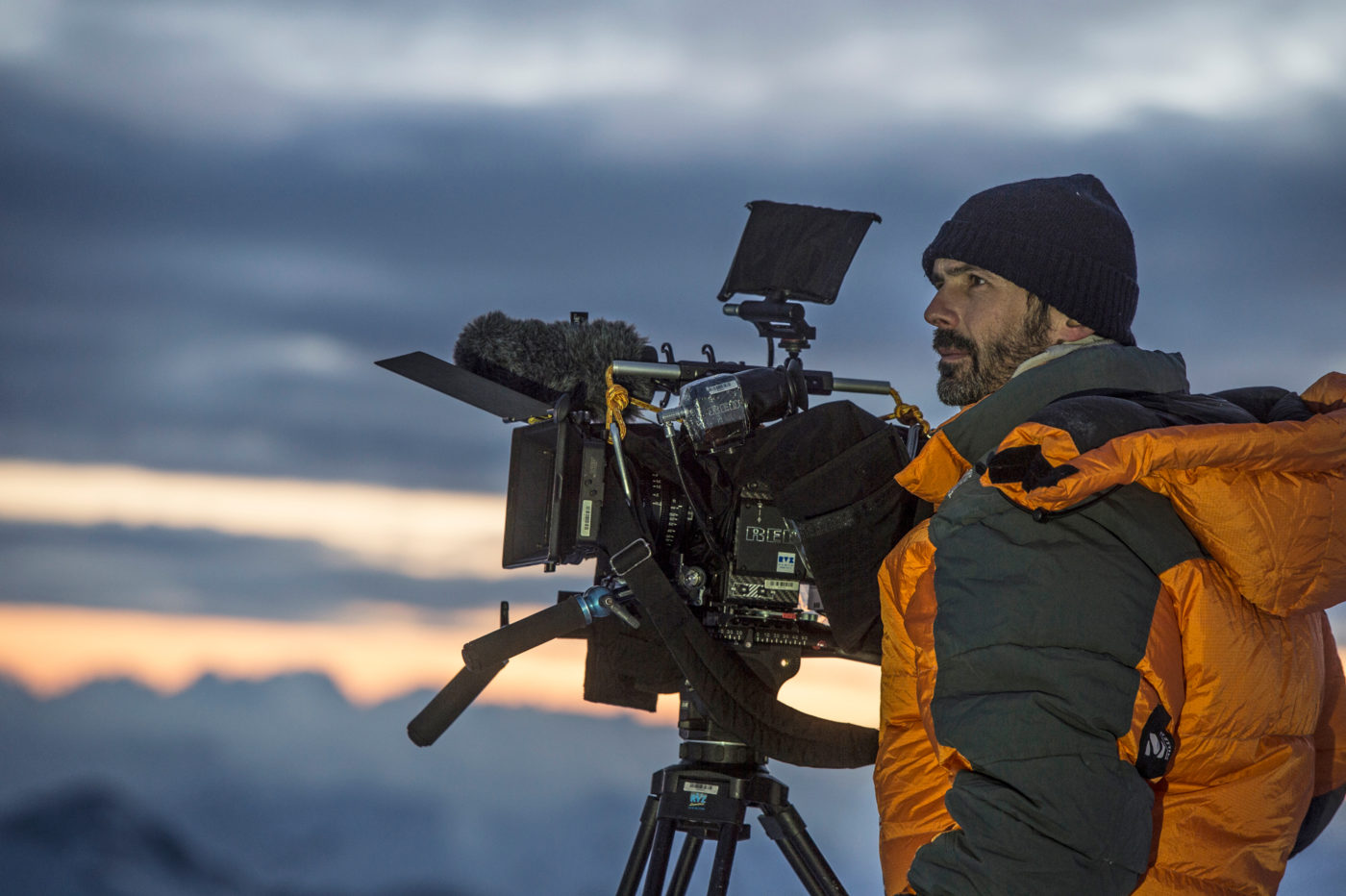
Photo: Pascal Tournaire
by Stéphan Massis, AFC. Translation by Lucy Allwood.
Samuel Renollet (RVZ) contacted me in mid-November 2017 for an adventure I couldn’t refuse: head to high altitudes and test the new RED MONSTRO 8K VV camera with SIGMA Cine Lenses. Samuel’s idea was a test shoot with this large sensor camera in difficult conditions, in the high mountains, with a small crew.
Samuel and RVZ had a serious commitment to the project because shooting in the high mountains with a small crew is no easy matter. I emphasized that January wasn’t the ideal season for doing this. Temperatures can really fall and bad weather conditions could mean we’d be stuck waiting in the valley for a week or more. There was a big risk we’d come back empty-handed, but Samuel was willing to try and we started to prepare the project.
I put together a small crew of very motivated people. The expedition would have been impossible without my great friend Pascal Tournaire. Pascal is a mountain photographer. He knows the Alps like the back of his hand and, above all, he knows where the really beautiful viewpoints are. Pascal’s connections were also invaluable. Thanks to him, many doors opened and we were able to use mountaineering equipment loaned by Millet, Petzl and TSL. The town of Courmayeur also helped us out.
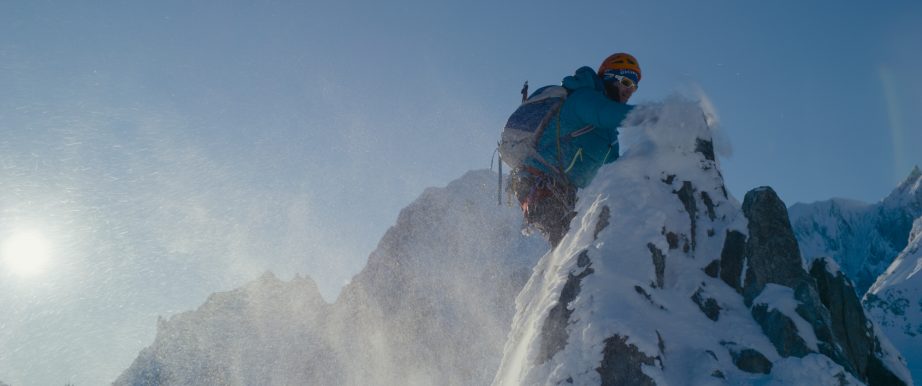 The actors were the guide Yann Delevaux, and the actress Caroline Tillette. The rest of the crew were experienced climbers: Jean Michel Poulichot, camera assistant and climber, and Julien Michel, a friend and a guide. Olivier Pujol, another friend who’s a guide, joined us for two days as reinforcement on the most vertical climbs. So, most of the time we were a team of 6 on the mountain.
The actors were the guide Yann Delevaux, and the actress Caroline Tillette. The rest of the crew were experienced climbers: Jean Michel Poulichot, camera assistant and climber, and Julien Michel, a friend and a guide. Olivier Pujol, another friend who’s a guide, joined us for two days as reinforcement on the most vertical climbs. So, most of the time we were a team of 6 on the mountain.
Marie Guénon from Be4Post was at Courmayeur taking care of the data backups.
We did the first tests in Paris, post-producing at Amazing Digital Studios with Frédéric Savoir and watching the tests on a 9m screen. Based on the tests, I made several choices, in particular the decision to shoot at a maximum between 4 and 5.6 and to add a Classic Soft on all the shots to break up the highlights, which is useful filming the snow in sunlight.
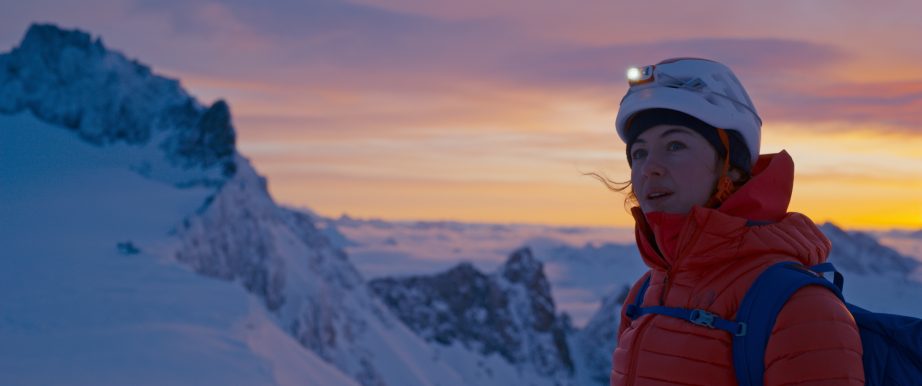 Transforming a RED MONSTRO into something more like a photo-journalist kit is no easy matter. Three days before the shoot, we took the camera up to altitude to test our setup. The two tests we did at altitude were instructive. We modified our configuration significantly, and adjusted the equipment. Our technical configuration was pretty simple: RED eyepiece, 5” RED monitor, FF4 follow focus, LMB5, grip handles.
Transforming a RED MONSTRO into something more like a photo-journalist kit is no easy matter. Three days before the shoot, we took the camera up to altitude to test our setup. The two tests we did at altitude were instructive. We modified our configuration significantly, and adjusted the equipment. Our technical configuration was pretty simple: RED eyepiece, 5” RED monitor, FF4 follow focus, LMB5, grip handles.
We had scouted our locations around the refuge. Our budget didn’t allow for helicopter drop-offs or a lot of guides. So we carried everything up ourselves, the film equipment and our mountaineering gear (extra clothing, axes, crampons, water, food…
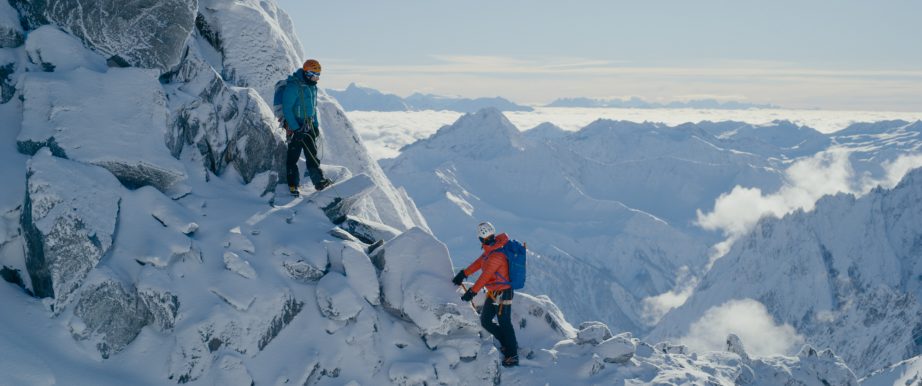 We had to get the camera as light as possible. And as ergonomic as possible, because any manipulation of the camera was tricky in the cold, the wind, the snow, the storms, and with gloves on.
We had to get the camera as light as possible. And as ergonomic as possible, because any manipulation of the camera was tricky in the cold, the wind, the snow, the storms, and with gloves on.
For each day’s shoot, I limited myself to just three lenses. Every morning I decided on the lenses I would take for the day.
Jean Michel, my camera assistant, had renounced his 5.6” TVLogic screen in favor of judging focus on the RED screen.
The heaviest things were the batteries. It was very cold this January, the temperature was varying between -20°C and -25°C. It was important to start the camera up when we left the refuge, and to keep it charged the whole time we were outside. We used one V-Lock Bebob 200 battery each hour and a half.
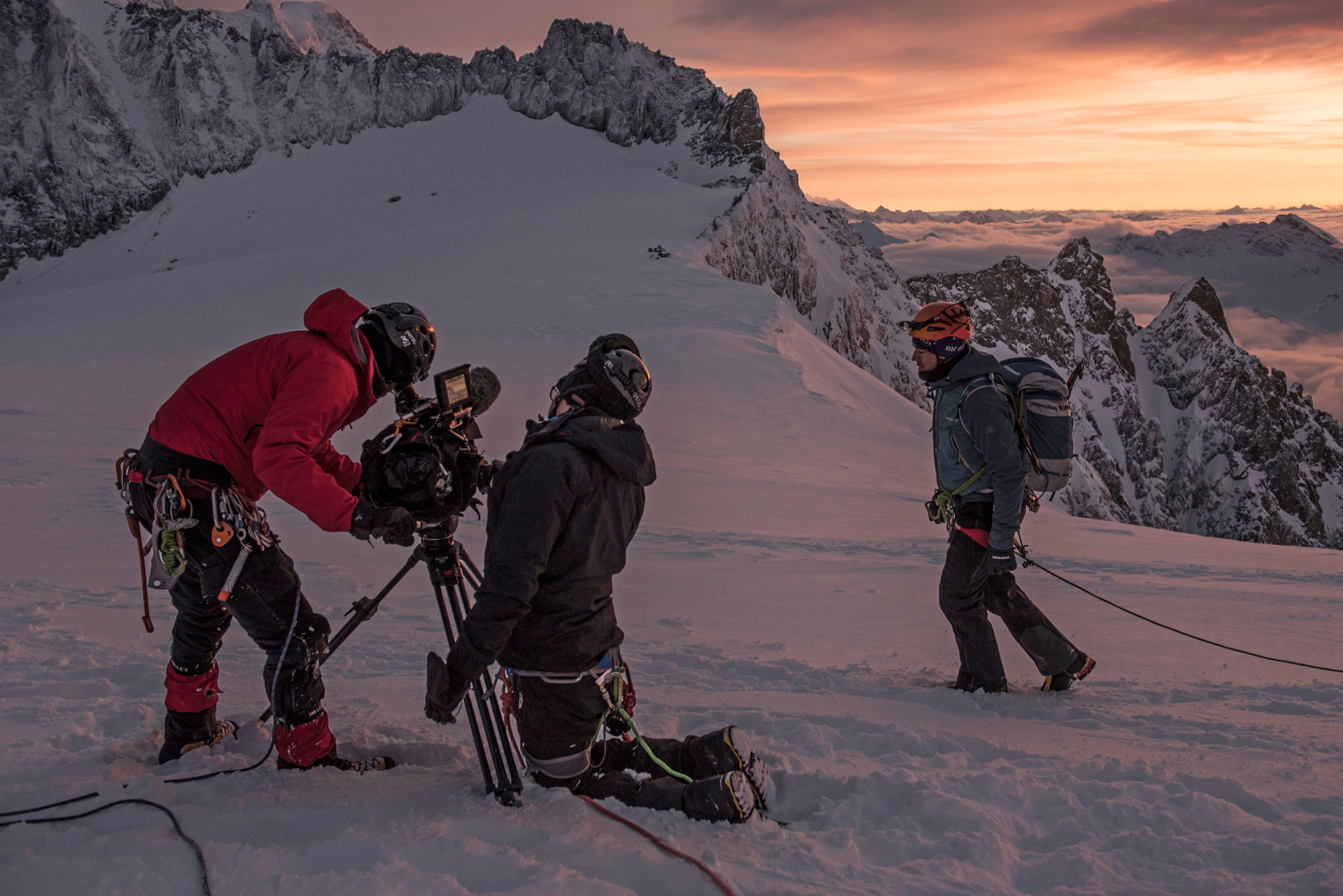 We had calibrated the sensor at 33°C so as to better adapt its temperature to the cold. That meant we could economize on batteries. Below -15°C we shut off the ventilation on the camera so that the sensor stayed at a constant 33°C. To keep the camera “warmed up” and to protect it from the wind and the snow we designed a custom cover of flexible, water-proof material. At those temperatures, everything freezes and becomes hard to manipulate.
We had calibrated the sensor at 33°C so as to better adapt its temperature to the cold. That meant we could economize on batteries. Below -15°C we shut off the ventilation on the camera so that the sensor stayed at a constant 33°C. To keep the camera “warmed up” and to protect it from the wind and the snow we designed a custom cover of flexible, water-proof material. At those temperatures, everything freezes and becomes hard to manipulate.
The story of the film is simple. I wanted to recount a roped climb on a “normal” expedition. No mountain superman, no drama. I wanted to share why people like me go up there, for the pleasure of the effort, the beauty of the landscapes, the joy of instinct rediscovered.
I knew the weather and the mountain would determine the timing and the settings. So we had to have a loose plot, and approach the film like a documentary.
We had to be very flexible. Every evening, based on the latest weather report, all six of us would decide together what we would shoot the next day.
Depending on the setting, we would adapt our film and mountaineering equipment aiming to be as light as possible.
On the first day of the shoot, the weather forecasts were catastrophic, as Storm Eleanor had just hit France. Despite that, Armando Chanoine, who runs the Torino refuge, opened it up for us so that we could sit it out at altitude. The first day, we didn’t shoot, but we went out into the storm to scout locations.
We tempted fate and then we got lucky. Contrary to forecasts, the weather suddenly improved, and we had 4 days of magnificent conditions. It was seriously cold (between -20°C and -25°C) but the light was magnificent.
I pre-graded the rushes at Amazing with Frédéric Savoir.
In these exceptional landscapes, constantly changing, there’s a real rationale for 8K.
I feel that the 8K does justice to the subtlety of the colors, the infinite nuances of the mountain. We had extremely varied situations. There were some moments of incredible mist, and the details of the mountains that were visible through the cloud were stunning. The sensor did an exceptional job in these extreme conditions.
We also shot night scenes. I was impressed by the quality of the blacks, and the low level of signal noise.
I had used SIGMA Art Lenses for photography. But I’d never used SIGMA lenses for cinematography. I needed these lightweight cine lenses that would cover the 8K. I shot a lot of landscapes with an enormous amount of detail, and I was impressed with how the lenses performed. The flare is interesting when the sun is in the field of view. Mechanically, they functioned very well, and the cold was never a problem. They’re good lenses which are entirely suited to this kind of adventure!
Technical specifications:
- Camera : RED WEAPON 8K VV Camera with MONSTRO Sensor
- Rentals : RVZ, Samuel Renollet
- Ratio: 2.40
- ISO: 800 and a few night shots at 1600 and 3200.
- Lenses: SIGMA Cine FF High Speed Primes: 20, 24, 35, 50, 85, 135 mm
- Filters: True ND and 1/8 Classic Soft.
- I shot most of the time between T4 and 5.6. The night shots are shot at T2.8.
- Director of Photography: Stéphan Massis, AFC
- Camera Assistant: Jean Michel Poulichot
- Location manager and stills photographer: Pascal Tournaire
- Production: Samuel Renollet, RVZ
- Data Manager: Marie Guédon, Be4Post
- Post-Production: Frédéric Savoir & Lucy Allwood, Amazing Digital Studios
- Editing: Vianney Meurville
- Alpine guides: Yann Delevaux, Julien Michel, Olivier Pujol
- Casting: Caroline Tillette, Yann Delevaux
Here’s the video – a Vimeo Staff Pick:













